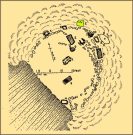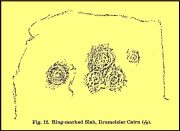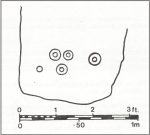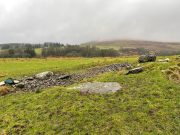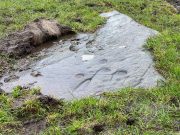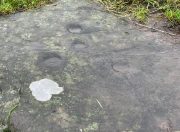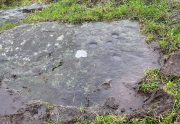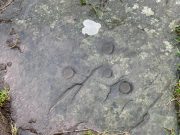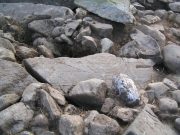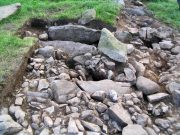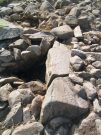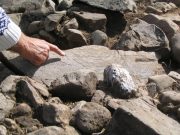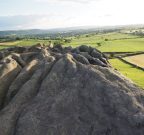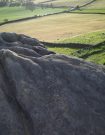Cup-and-Ring Stone (lost): OS Grid Reference – Q 46 00
Archaeology & History
This lost carving probably still exists, but in all likelihood is well overgrown by vegetation. It was in that state of affairs when Rev. Orpen (1908) wrote about it more than a hundred years ago in his essay on the petroglyphs between Lispole and Dingle. After describing and illustrating several carvings in the area, he told:
“I may mention here that further west, near Ballintaggart, at Ballywoonig, there is another single cup and circle which I found on a rock, the last of which was covered with clay and grass. I had these removed, hut nothing further was disclosed.”
Sadly, he left us with no sketch. His wording suggests that the carving is close to the southern boundary of Ballinvownig, pehaps near the souterrains near Ballintaggart house…? Perhaps some local antiquarian explorers might be able to find out where it’s hiding—although it will doubtless be covered in vegetation.
References:
- Cuppage, Judith, Archaeological Survey of the Dingle Peninsula, Oidhreacht Chorca Dhuibhne: Ballyferriter 1986.
- Orpen, R., “Antiquities near Lispole, Co. Kerry,” in Kerry Archaeological Magazine, volume 1, 1908.
© Paul Bennett, The Northern Antiquarian
The map could not be loaded. Please contact the site owner.
